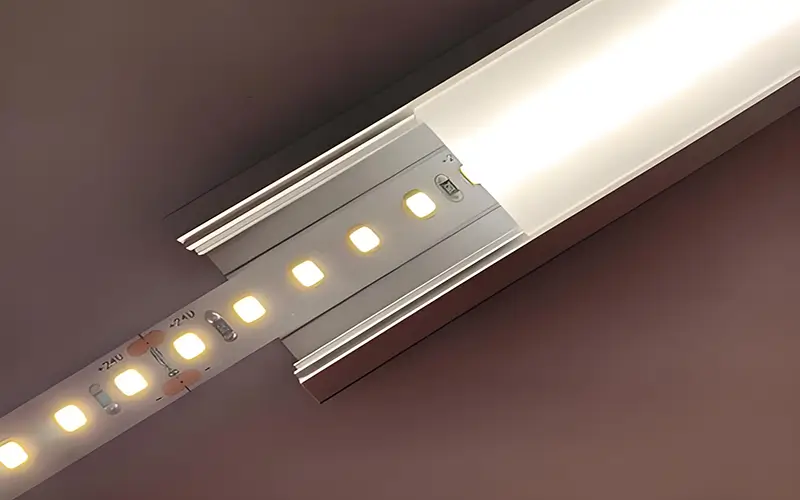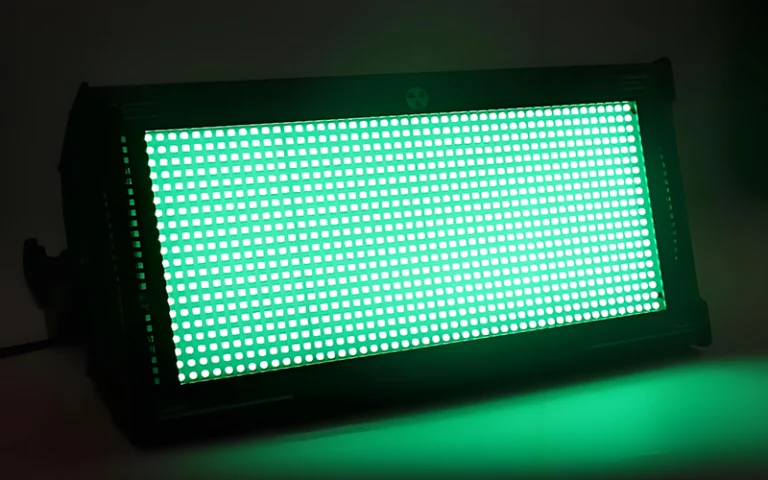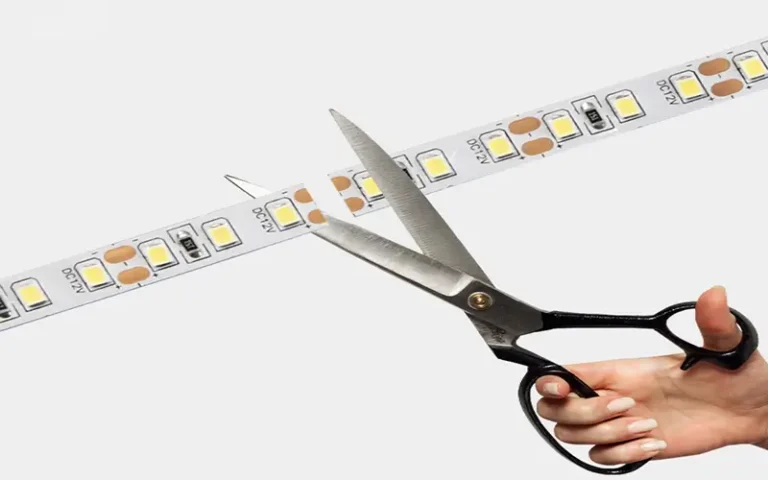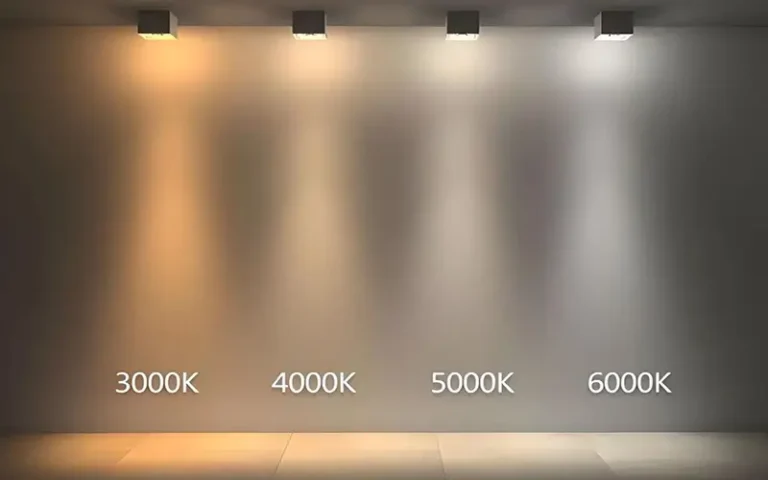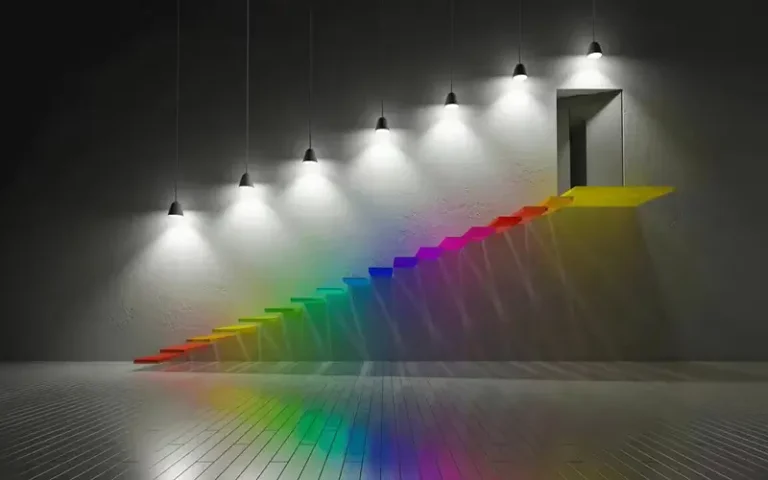Does the LED Strip Light Need a Channel?
One of the most common LED accessories for LED strip lights is aluminum channels and diffusers. LED strip light is used with a channel in a variety of lighting applications, both residential and commercial.
An important consideration when installing LED strips is whether to use aluminum channel for led strip lighting. This article will explore the necessity of using LED light strip channel, can channels help dissipate heat from LED strips? and the most common questions about aluminum channels and diffusers.
What is an Aluminum Channel for an LED Strip Lights?
The aluminum channel, also known as an LED aluminum profile or LED extrusion, is a housing made of aluminum. The channel is used to protect decorate, and preserve LED strip lights.
These channels come in a variety of shapes and sizes, and also in different install mounting methods. They are generally equipped with end caps, mounting clips, or diffusers.
The main functions of the aluminum channel include protecting the LED strip lights, improving heat dissipation, and enhancing the aesthetics of the installation.
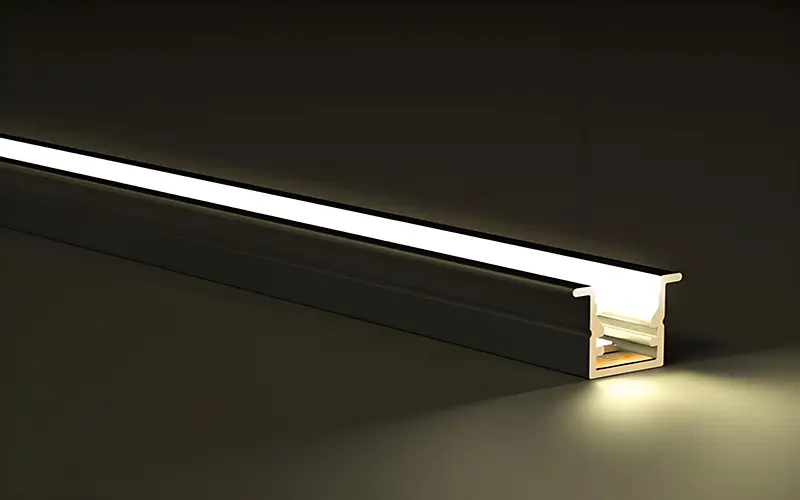
Does the LED Light Strip Require a Channel?
Not necessarily, LED strip lights can be used and installed normally without an aluminum channel.
However, we recommend that installations consider installing LED profiles, as using aluminum channels offers several advantages that can improve the performance and life of the lights. Why you might consider using the aluminum channel for your LED light lighting?
Protection
The channel protects the LED strip light from dust, moisture, and physical damage, thereby extending the life of the LEDs.
Heat dissipation
The aluminum channels help dissipate the heat generated by the LEDs, thereby increasing their efficiency and lifespan.
Aesthetics
Aluminum channels offer a clean, sophisticated look, hiding the LED light strip and wiring while providing a professional appearance.
Light diffusion
With diffusers that soften the light output, reduce glare, and create a more even lighting effect.
Diffusers and Light Distribution
Diffusers are an integral part of many LED channels and are available in frosted, clear, and opalescent materials. They work by diffusing the light emitted by the LEDs, reducing the intensity of hot spots and producing a smoother, more even light distribution.
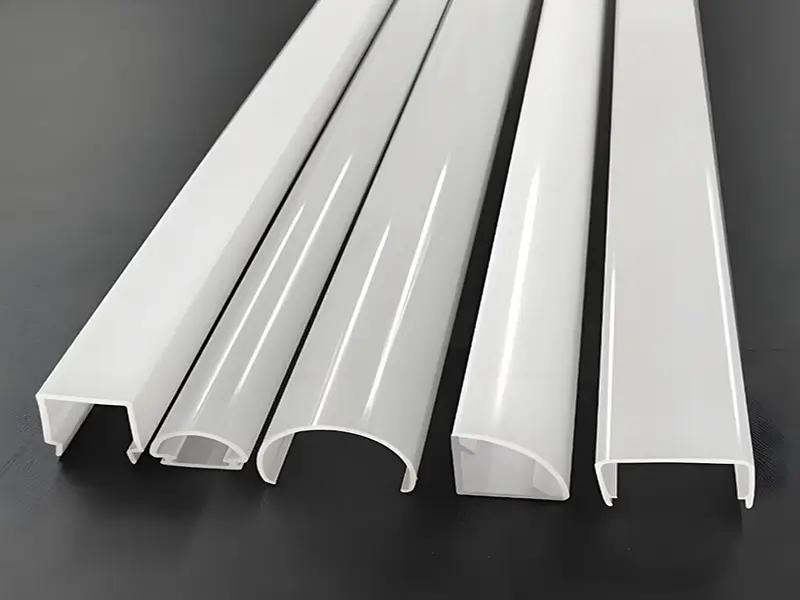
This is particularly beneficial in applications where the light is visible, such as under-cabinet lighting, display cases, or architectural accents.
Using diffusers can also enhance the visual comfort of the lighting by minimizing harsh shadows and reducing eye strain. In addition, diffusers can help protect the LED strip from dust and debris.
Does a Channel Help Heat Dissipation for LED Strip Light?
Absolutely, the aluminum channel play a crucial role in the heat dissipation of LED strip light. When LEDs operate, they produce heat, and excessive heat can compromise their performance and reduce their lifespan.
Due to its superior thermal conductivity, aluminum effectively disperses this heat away from the LEDs, ensuring they remain cooler and last longer.
Effective heat management is essential for preserving the efficiency and dependability of LED strip lights, particularly in high-power applications or scenarios where the LEDs are in use for long durations.
How Do I Choose an LED Channel?
Selecting the right LED channel for LED strip light indoors and outdoor depends on several factors:
- Size: Consider the width and height of your LED strip to ensure it fits within the channel. Channels come in various shapes, to check each is suited for different applications.
- Installation way: Determine where the LED strip will be installed. As we know, recessed channels are ideal for embedding in walls or ceilings, while surface-mounted channels are suitable for under-cabinet or shelf lighting.
- Diffuser Type: Pick a diffuser that suits your lighting preferences. Frosted diffusers offer a softer, more even light, while clear diffusers provide greater brightness and make the individual LEDs more visible.
Conclusion
Although LED strip light do not necessarily require aluminum a channel. But using the channel will provide many benefits, protecting and aesthetically pleasing lighting, improving heat dissipation, and ensuring professional results.
By understanding the importance of LED channels for LED strip lights and how to choose the right type for your project, you can achieve optimal lighting performance and visual appeal in any environment.
For more detailed types and guides on LED strip lights, visit our ESSENLED.
FAQs
LED channels are used in LED light strips primarily to protect the LED strip from dust, moisture, and physical damage. They also improve aesthetics by diffusing light, providing a clean, finished look.
Yes, LED channels are available with diffusers. They can improve light distribution by using diffusers, resulting in a more even, softer light output, and less glare and hot spots.
To install an LED strip in a channel, you need to measure and cut the channel to the desired length in advance, secure it in place with screws or adhesive, and then place the LED strip into the channel.
Yes, aluminum LED channels are particularly effective at dissipating heat. They can help dissipate heat from high-brightness LED strips, helping to extend the life of the LED strip.

